FUTURE AFRICA
Growing resilience in a Gauteng garden
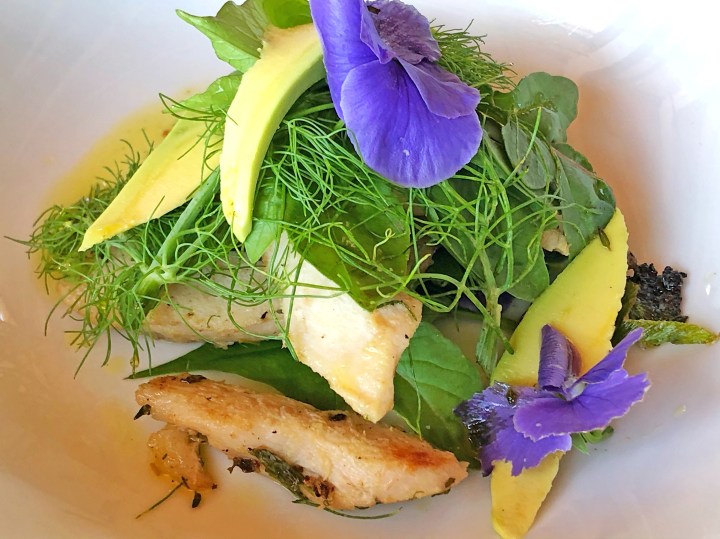
This is the garden that holds the clues to our urban food future. Gazing into its promising, fruiting middle distance is a thrill, sensing that open freedom of being able to start this food-for-urbans thing over again, properly. Welcome to Future Africa.
Future Africa is where Hennie Fisher and I wander around hopefully, stopping, discussing, cutting, picking, puzzling over and filling pockets with culinary curios. It’s part of a campus on the eastern side of Pretoria University, a research centre for its department of Agricultural and Natural Sciences, becoming a landscape of resilience, where the things being grown will be more capable of withstanding climatic problems, most of them indigenous to the continent anyway.
We’re wading through bulbinella and African rosemary, “more soft and gentle”, as Hennie says, while approaching a wild banana tree. Hennie Fisher lectures about Culinary Arts at the university’s department of Consumer and Food Sciences, a doctoral chef who has enabled many of our country’s and others’ student chefs to go on to brilliant careers. He is also a particularly special food friend. The stylised looking wild bananas originated in the African Great Lakes area in the east and are used to make matoke, the delicious “pap” alternative and staple there, and could be anywhere, if grown. It’s useful food like most or maybe all of the plants and trees planted here, in these fascinating surrounds, some of which are still a bit small for us to work out yet.
What could be the Senegalese custard apple is one of these. We aren’t sure about our find but we know some are planted here somewhere.
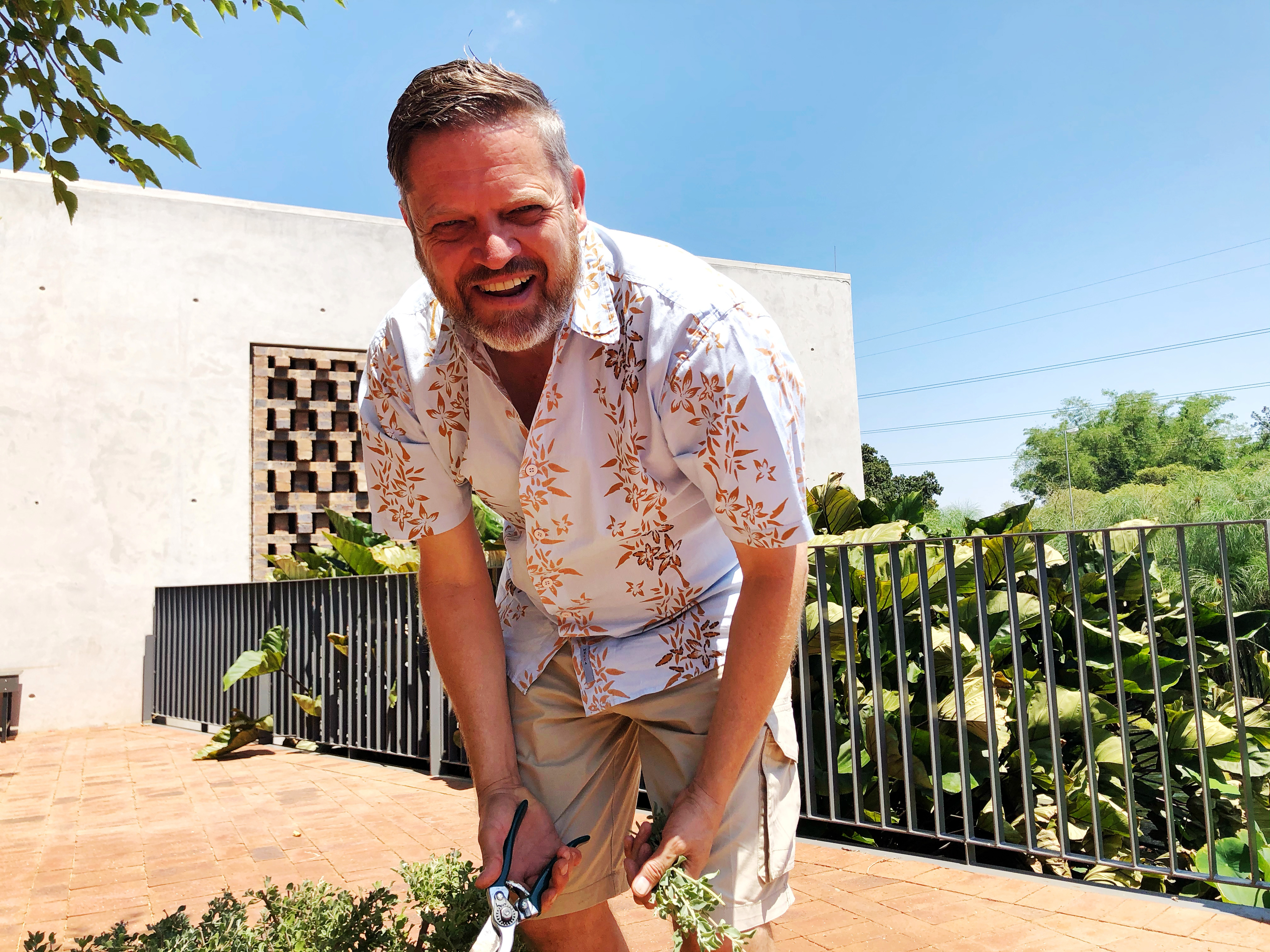
Hennie Fisher, chef, culinary arts lecturer. (Photo: Marie-Lais Emond)
Another chef, of the Future Africa campus itself, has agreed to create for us a light summer dish for lunch later.
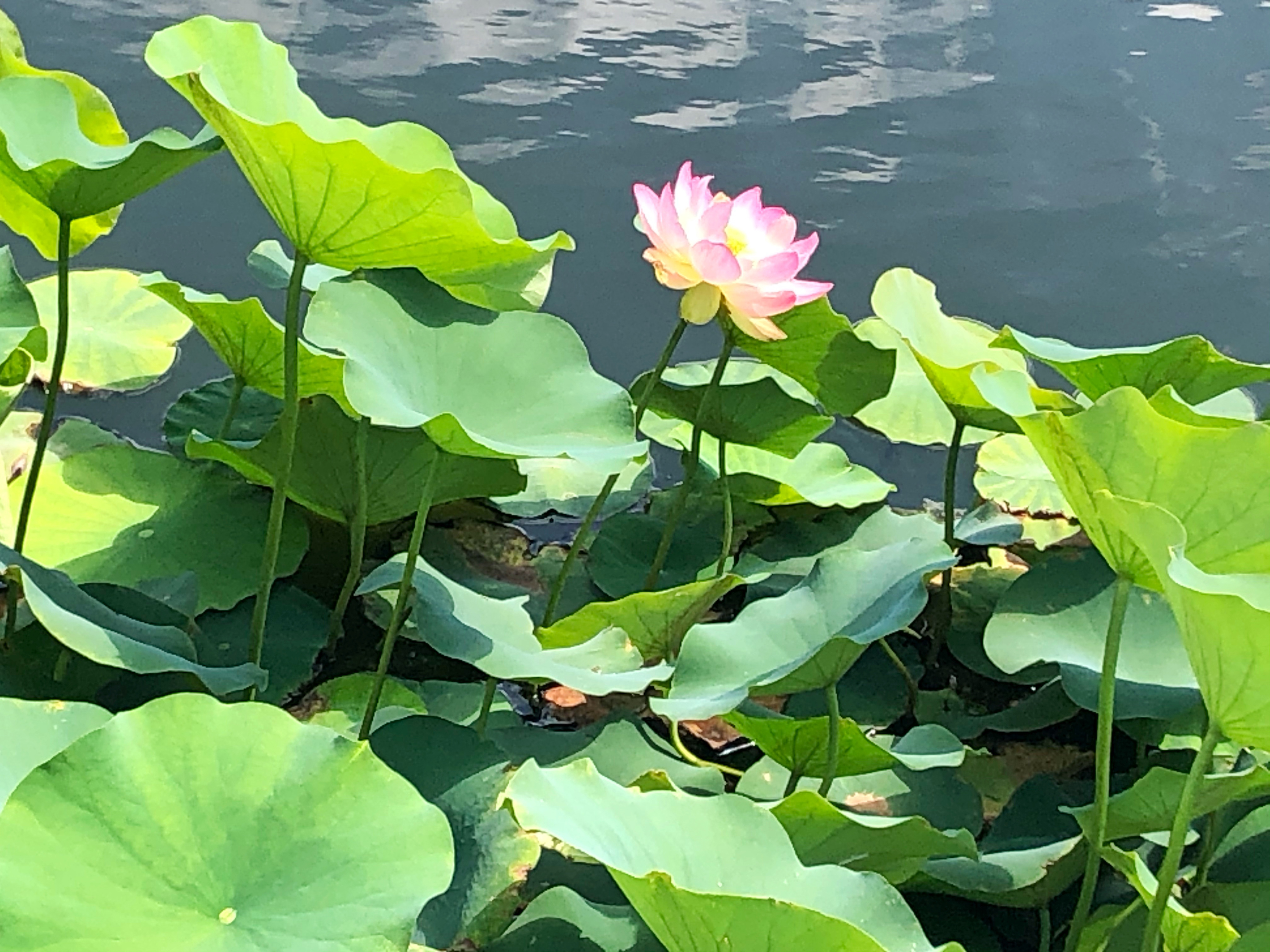
The root of the ‘blue’ lotus of Egypt is boiled or roasted to eat. (Photo: Hennie Fisher)
We puzzle over the water garden where, near highly edible waterblommetjies, are blueish waterlilies or lotuses. Surely they are Indian? But we discover later that this is the “blue” lotus of Egypt, its root eaten by boiling or roasting it. And that they aren’t the fruit of the lotus tree from which Odysseus dragged his drugged sailors. That is now thought to have been the jujube somewhere like Japan. But the water chestnuts? Surprise, surprise: the very Chinese water chestnut is also indigenous to tropical African countries. They’re ours too, to grow in urban ponds.
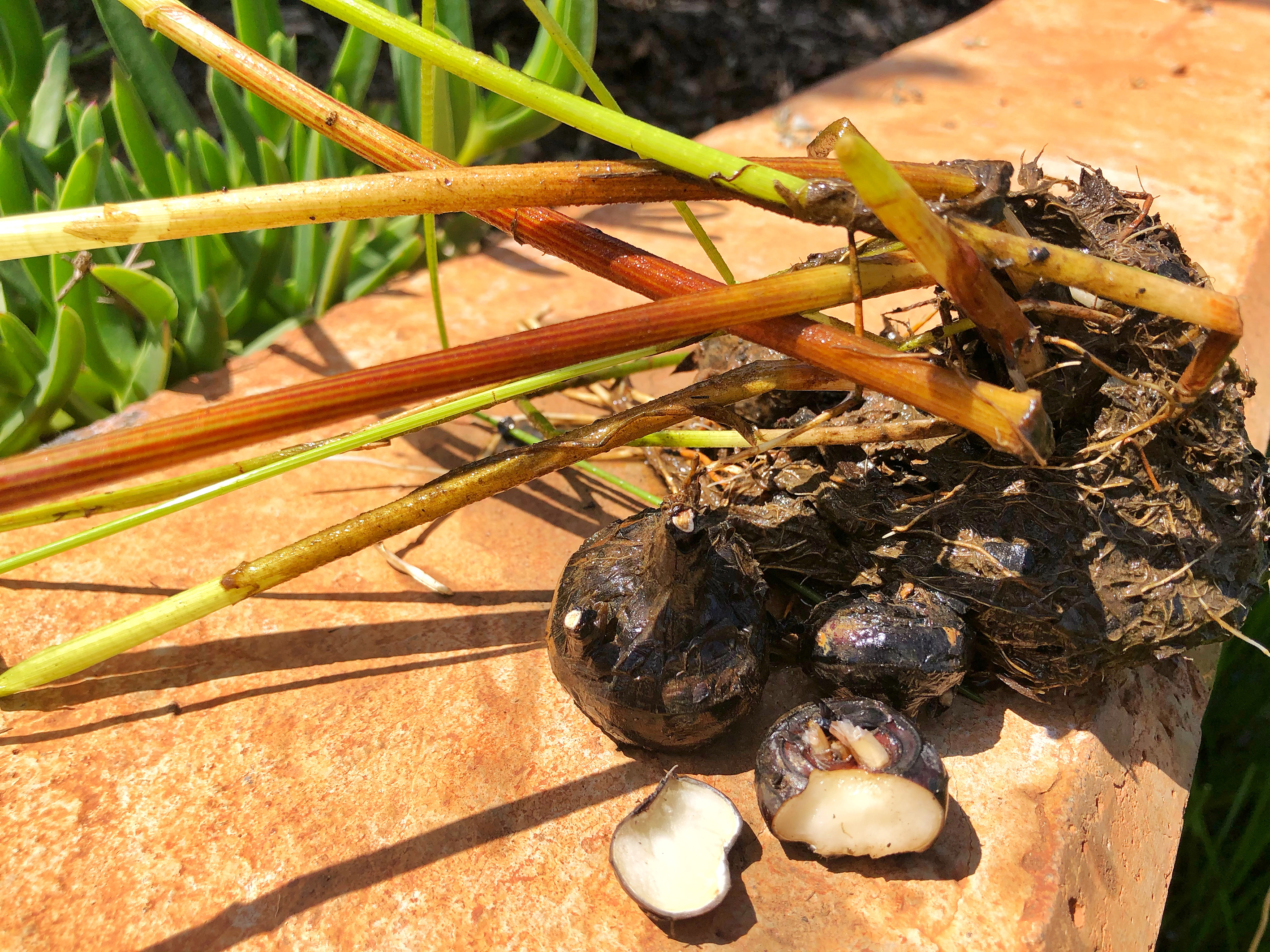
Water chestnuts are indigenous to tropical Africa. (Photo: Hennie Fisher)
And Hennie and I have just discovered that Africa has its own rice, Oryza glaberrima rather than sativa, grown in those ancient African times and possibly taken by slaves to the US. The gardeners tell us that it is brown rice and, indeed, it is supposed to be reddish and much more nutritious, though harder than polished white rice. It can be grown in a variety of environments, not necessarily wetlands. We find it growing in quite dry soil, not far from the African watermelon, Tsamma melon or makataan, which Hennie’s students have used to make tamaletjie and other goodies before. I remember their also jellying the bright Horned Cucumbers we come across, too.
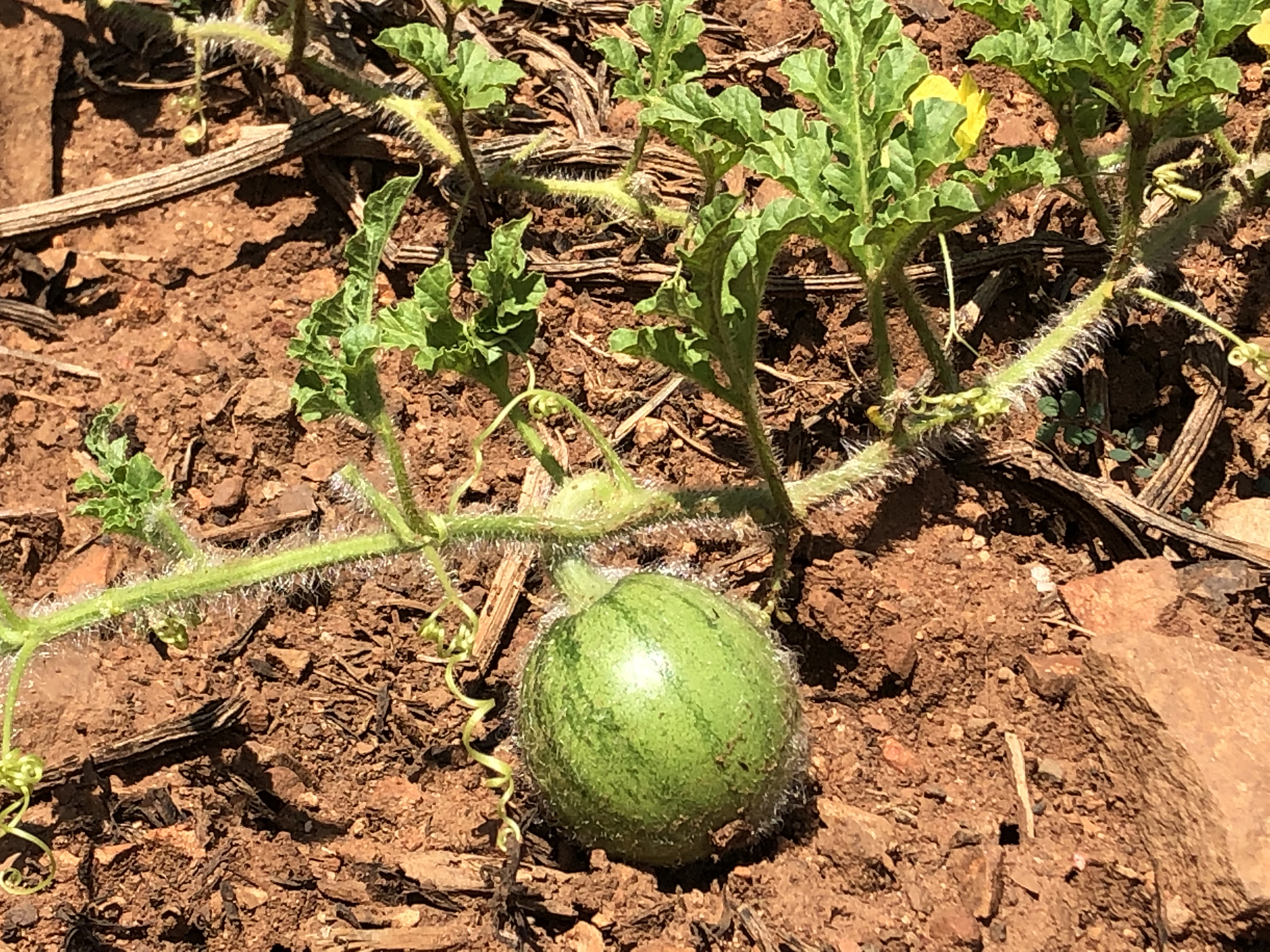
African watermelon or makataan, still small. (Photo Hennie Fisher)
There’s something fundamental in the idea of a new food beginning for our cities. Because, like in science-fiction, what’s futuristic is often based on what’s historic. So it is that the seeds of our new beginnings have been around since ancient African days.
The baobab, of course, epitomises this and, though it is here, I have yet to see one in another city. I’d love to, as much as I relish the idea of every part of our African tree of life being useful, particularly the deliciously sour-sweet baobab powder now used in so many things like ice cream and energy bars, and regarded as a superfood.
Hennie shows me a morogo I haven’t ever used, his favourite, stroking the much firmer leaves. I alight on the cassava, remembering a stunner dish at the Yeoville Supper club, made by Sanza Sandile. Hennie is also keen on the spekboom leaves that he uses for sorbets, while I often use the smaller versions for salads.
I have the distinct feeling that we could wander around in this sort of Eden for the entire day, talking food and making discoveries. It’s a good thing we’re expected for some lunch. I’m also thinking of another friend, Siphiwe Sithole of African Marmalade, who often berates us for buying expensive blueberries that are foreign to us and expensive, when we can eat and grow the nutritious ones from here. Here are so many berries: juicy dark water berries, lemony jackalberries, wild grapes, sweet pink broom cluster figs and the mysteriously yummy wild nightshade or nastergal.
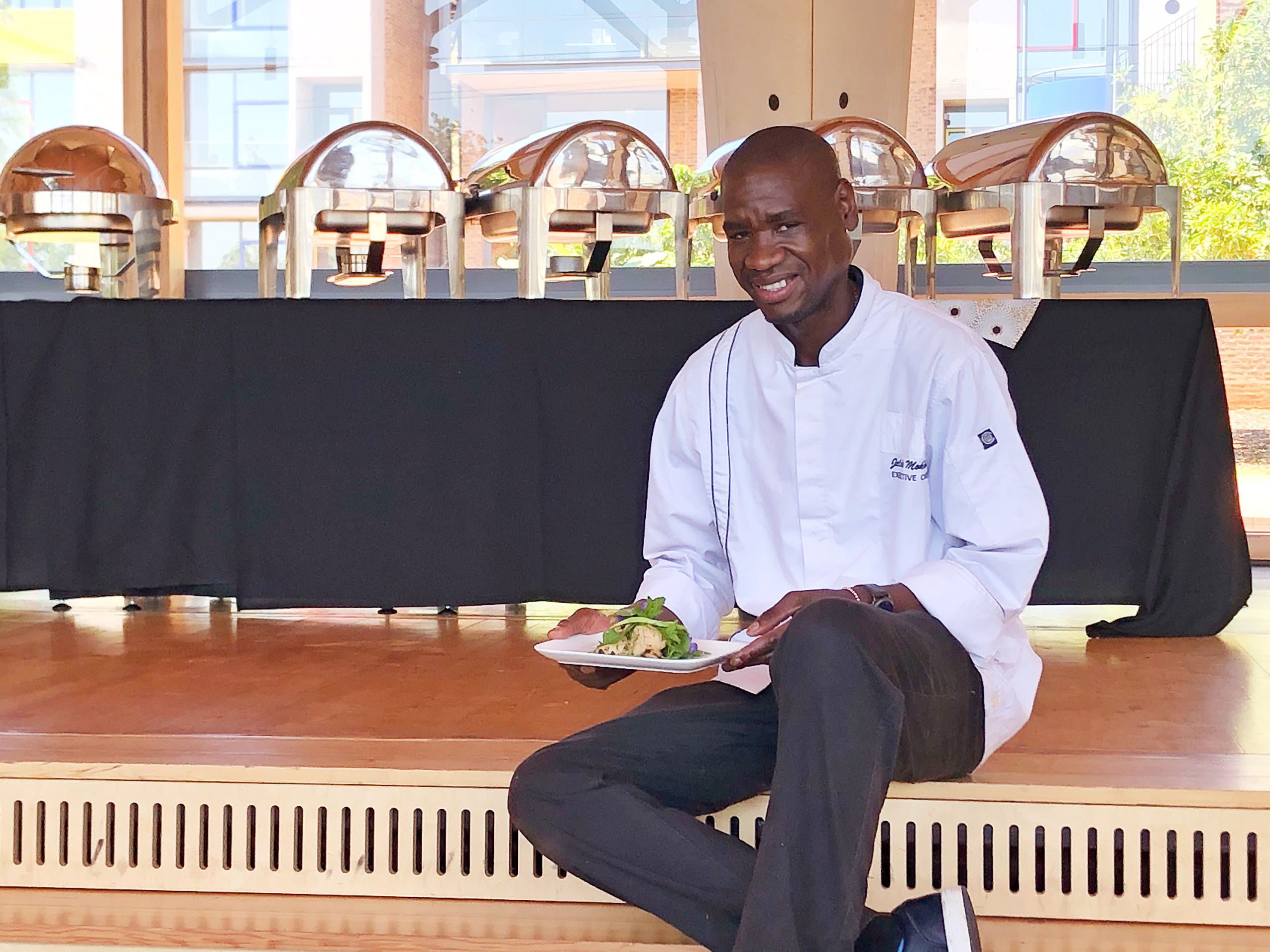
Executive Chef Jelele Mokhine on campus. (Photo: Hennie Fisher)
Chef Jelele Mokhine has used the unusually tasty leaves of the red African sweet potato plant and the Future Africa herbs growing outside, especially a delightful wild fennel, to make a very cheffy, sauced and beautifully constructed chicken salad that was a moist and delicious delight, exactly the sort of dish that we’ve been hoping for on this hot day.
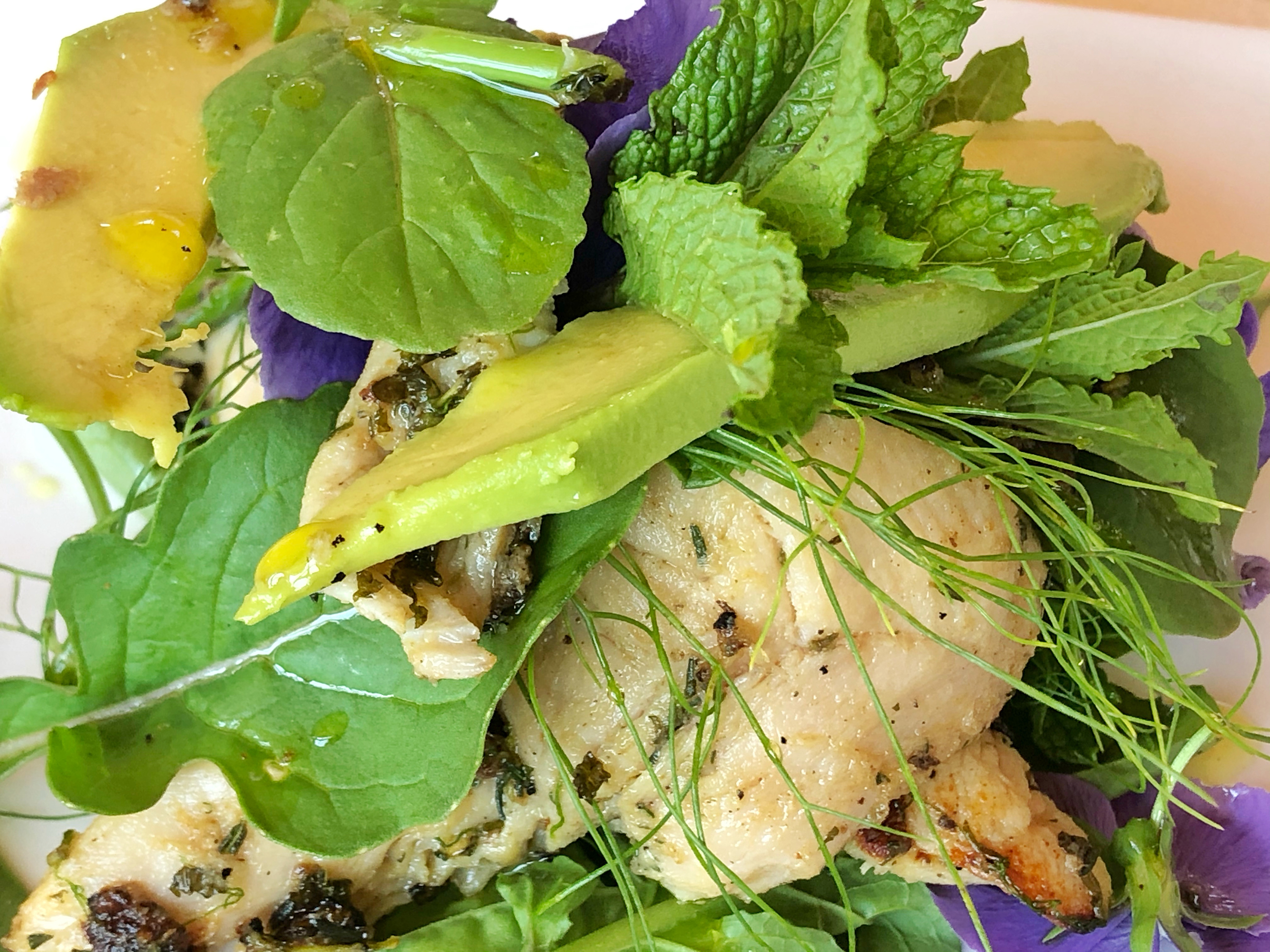
Salad of tasty leaves of the red African sweet potato plant. (Photo: Hennie Fisher)
He explains about the avo trees further down, not indigenous but a plantation of multiple kinds, perhaps to work out the perfect kind for our urban future. Hennie also showed me a copse of all kinds of citrus that he reckoned was a similar exercise, some already looking unlike the known oranges, naartjies, grapefruit, lemons, kumquats and limes. While we examine the different leaves, I pocket what seems akin to a citron, also a puzzlingly round, kumquat-size thing with sweet flesh and large pips.
We discuss how the Future Africa project could use urban landscapes to feed us and also the fauna that would form part of the food chain. African plants have that potential. Apart from what we’ve seen today, 2,000 grains and fruits have gradually been getting “lost”, today being rediscovered for utilisation. It’s a mighty exciting leap into the future with our own food resources at the ready. Could we really fix the urban food problems here on our own continent with all our own stuff?
I turn out my pocket and notice I’ve been rubbing herbs in there.
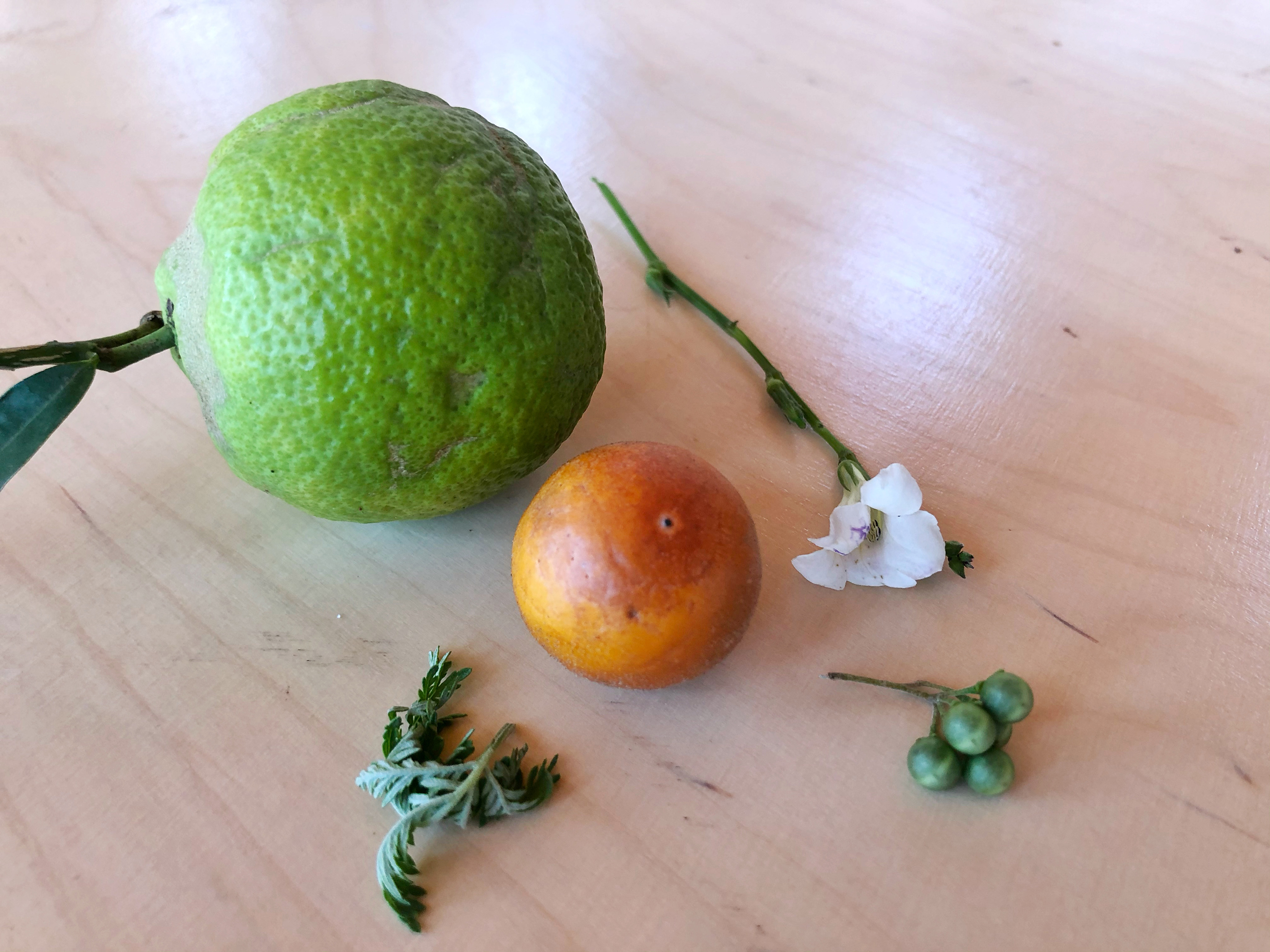
My pocket contents. (Photo: Hennie Fisher)
What’s left of the leaves is almost unrecognisable except for origanum and sage-type smells wafting among the fruits. DM






 Become an Insider
Become an Insider